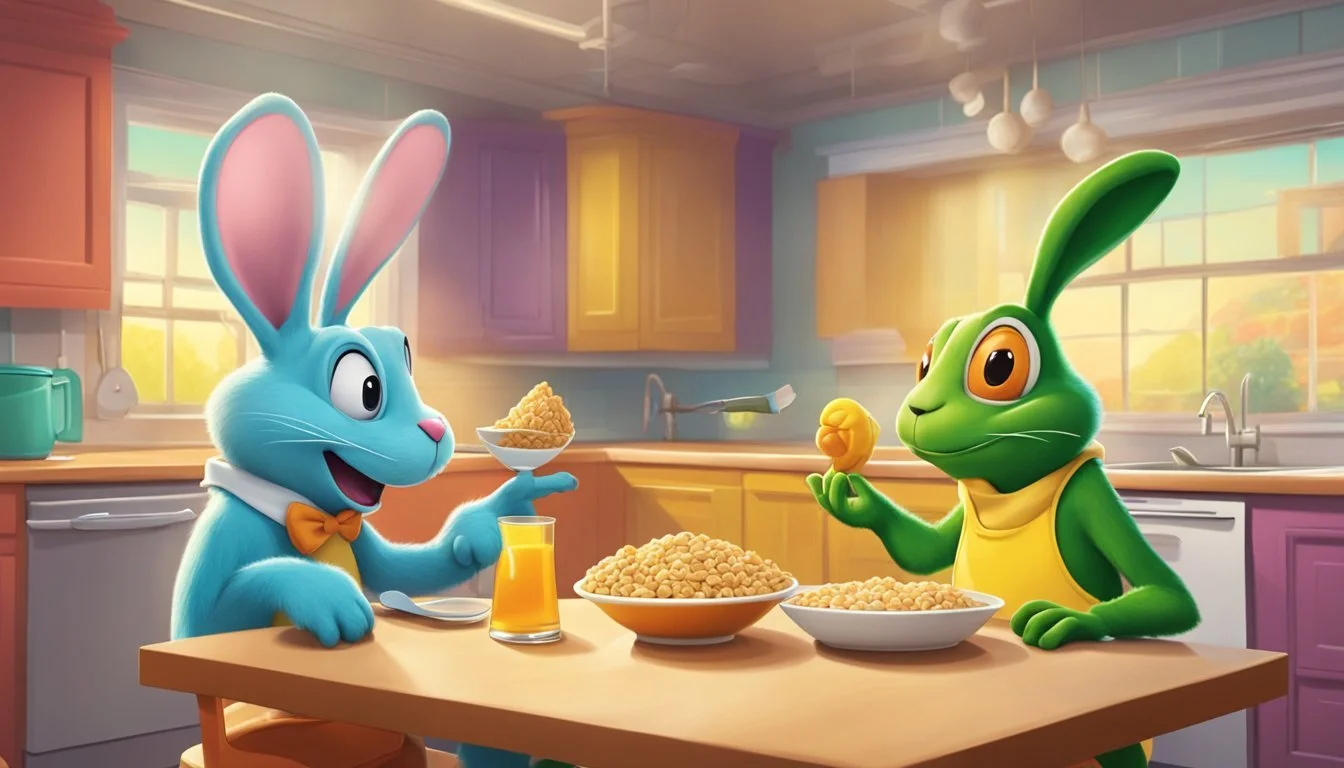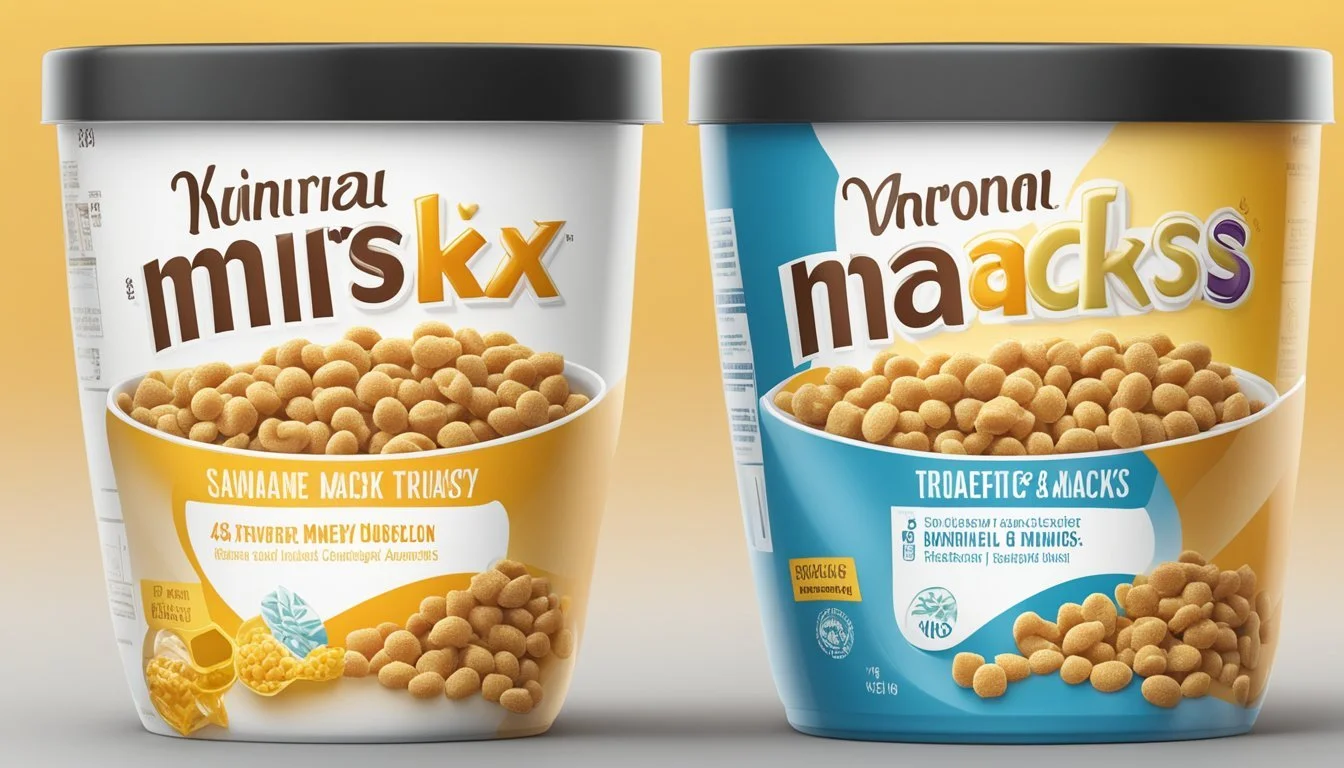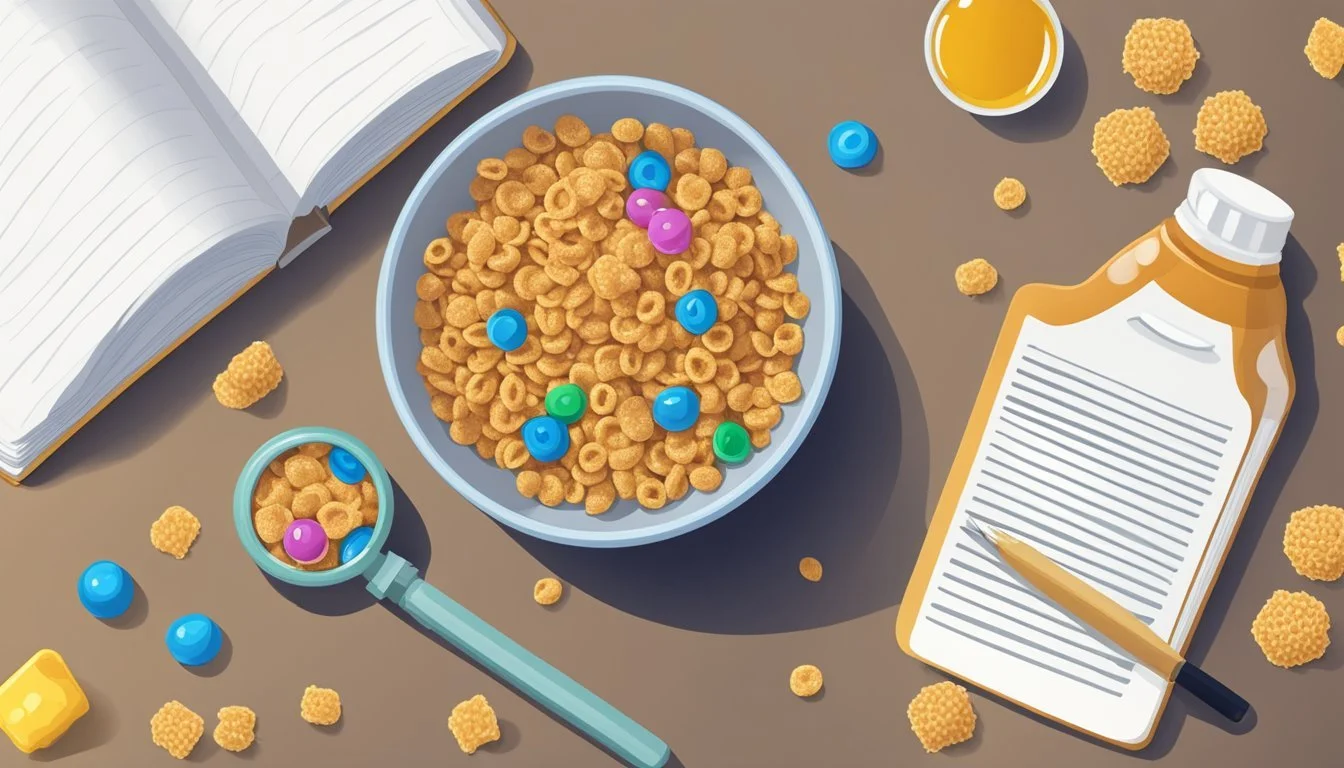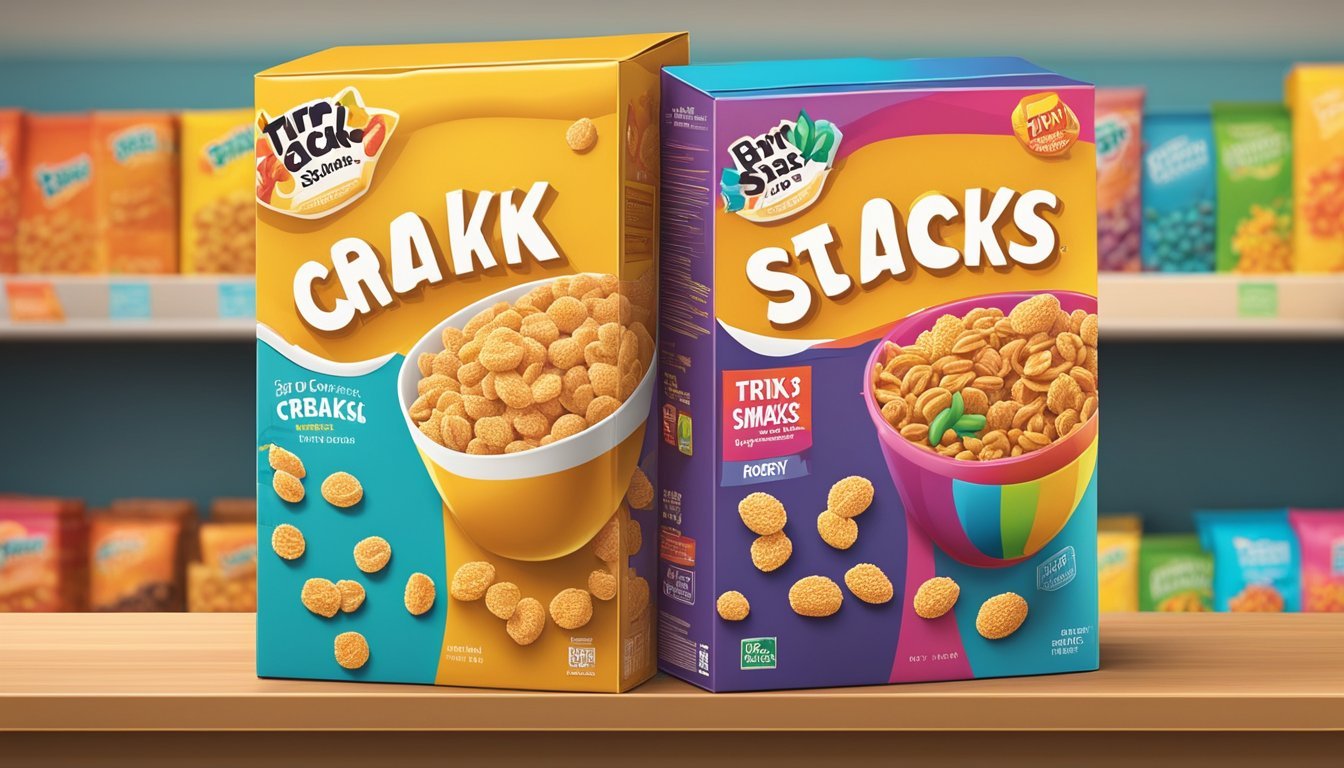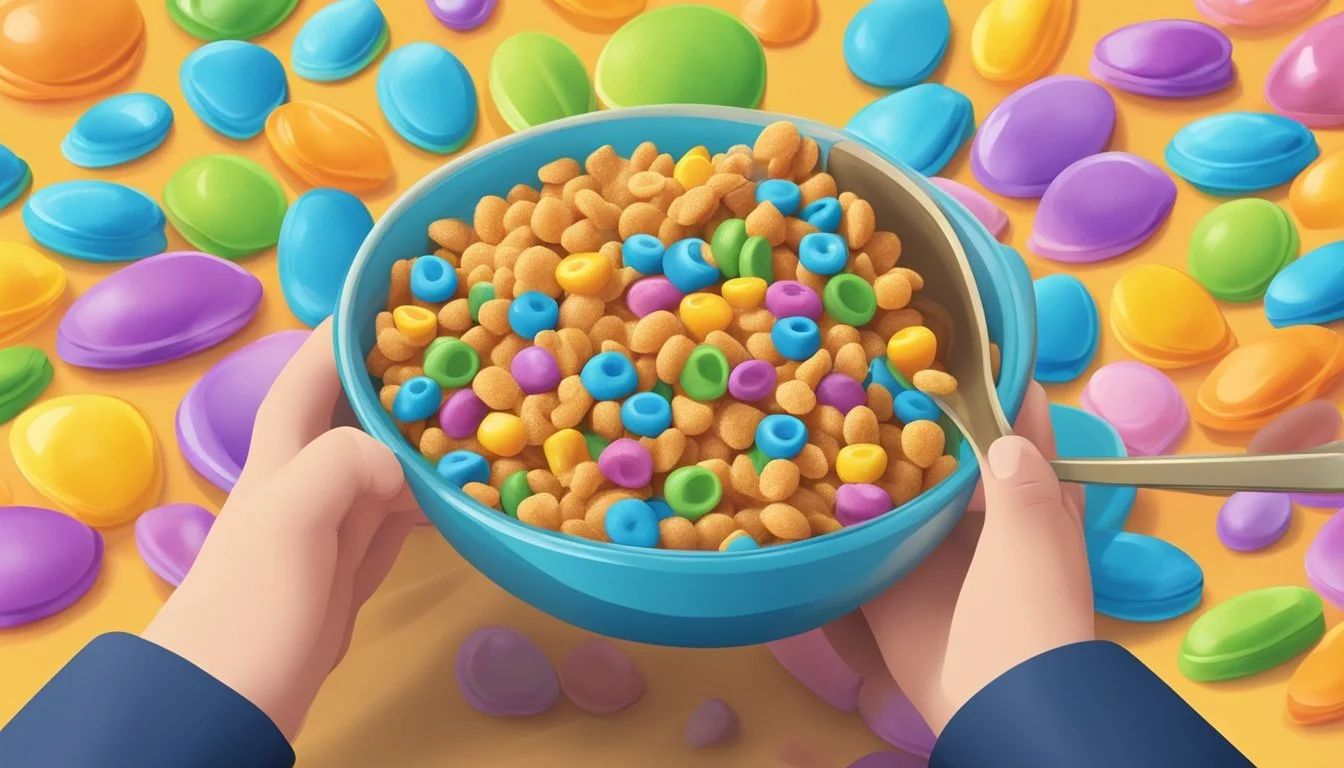Honey Smacks vs Trix
Comparing Nutritional Value and Taste
This Article is Part of Our Breakfast Cereal Guide with Details on Honey Smacks Nutrition and Trix Nutrition
Choosing the right cereal for breakfast can be challenging, especially when faced with popular options like Honey Smacks and Trix. For health-conscious individuals, knowing which of these cereals offers better nutritional value is crucial. Honey Smacks, a classic from Kellogg, packs 9 grams of complex carbohydrates per serving, while Trix from General Mills offers 13 grams.
When it comes to essential minerals, Trix takes the lead with significantly higher levels of calcium and iron. Trix contains 313mg of calcium per serving, compared to Honey Smacks' 14mg. This can make a big difference for those looking to increase their calcium intake. However, Honey Smacks has an edge with lower sodium content, which is beneficial for those monitoring their salt consumption.
Both cereals have their strengths and weaknesses, influencing the ultimate choice between them. Whether prioritizing complex carbohydrates, minerals, or sodium content, understanding these differences can guide one to a more informed decision in the cereal aisle. Follow along to see a deeper dive into their nutritional profiles and what makes each one stand out.
Historical Overview
Honey Smacks and Trix have distinct origins and have undergone several transformations over the years. Understanding their history provides insight into how these cereals became iconic breakfast foods.
Origins of Honey Smacks
Honey Smacks, originally known as Sugar Smacks, was introduced by Kellogg's in 1953. Its introduction came as a response to the growing demand for sweetened breakfast cereals. The cereal featured sugar-coated puffed wheat, setting it apart from other products available at the time.
The product's mascot, a cool frog named Dig'em, has become synonymous with the brand. Over the years, the name underwent several changes: from Sugar Smacks to Honey Smacks in the 1980s, and briefly to Smacks in the early 1990s.
In 2004, Kellogg's reverted to the name Honey Smacks. Despite these name changes, the core formula, a sweet, puffed wheat cereal, has remained largely consistent. This consistency has helped Honey Smacks maintain its place in the market, even amidst growing concerns about sugar in breakfast cereals.
The Evolution of Trix
Trix cereal was launched by General Mills in 1954, shortly after Honey Smacks. The cereal originally consisted of tiny, colorful, puffed corn balls. It quickly became popular for its bright colors and fruity flavors, appealing to children across the United States.
In the early 1990s, Trix transitioned to fruit-shaped pieces, featuring forms like berries, oranges, lemons, and watermelons. This change aligned with a trend toward more visually engaging food products.
In 2006, Trix returned to its original round shape, and a significant change followed in 2015 when General Mills removed artificial colors and flavors.
Despite these changes, Trix has remained a staple in many households, supported by its recognizable mascot, the Trix Rabbit. His catchphrase, “Silly rabbit, Trix are for kids!”, has become an enduring part of cereal advertising lore.
Nutritional Profile
Honey Smacks and Trix offer different nutritional benefits, from calorie content to vitamin and mineral composition. Each has its own strengths and weaknesses, which are worth considering for a balanced diet.
Caloric Content and Serving Size
Honey Smacks: A single serving of Honey Smacks (1 cup) contains approximately 110 calories. This relatively low-calorie count makes it a lighter breakfast option. However, it is important to be aware of the sugar content, which is significant in this cereal.
Trix: In comparison, Trix comes in at around 120 calories per serving (1 cup). The marginally higher calorie count is balanced by a different nutrient profile. Like Honey Smacks, Trix has a high sugar content, which contributes significantly to its calorie count.
Macronutrient Breakdown
Honey Smacks:
Carbohydrates: Around 24 grams per serving, mostly from sugars.
Protein: Contains about 2 grams per cup, making it a low-protein option.
Fiber: Very low, with less than 1 gram of fiber per serving.
Trix:
Carbohydrates: Approximately 27 grams per serving, again primarily derived from sugars.
Protein: Contains about 1 gram per serving.
Fiber: Trix has a slightly higher fiber content at around 1 gram per serving but still relatively low.
Vitamins and Minerals
Trix:
Rich in Iron, providing nearly 50% of the daily recommended value.
High in Vitamin A, Vitamin C, and various B-Vitamins including B6, B12, B1, B2.
Contains significant amounts of Calcium, Zinc, and Phosphorus.
Honey Smacks:
High in Selenium and Vitamin B12.
Offers limited amounts of Iron and minimal Vitamin A and Vitamin C.
Includes Copper, Magnesium, and moderate levels of B-Vitamins but less aggressively fortified compared to Trix.
Both cereals reflect standard industry practices, with fortified vitamins and minerals compensating for any natural deficiencies. Concerns typically arise around the high sugar content in both cereals, making them less ideal for weight management or those monitoring blood sugar levels.
Ingredient Analysis
When comparing Honey Smacks and Trix, key differences arise in the types of grains and sweeteners used, as well as the additives and preservatives present. These factors contribute significantly to the respective nutritional profiles and potential health impacts of the cereals.
Grains and Sweeteners
Honey Smacks primarily uses puffed wheat as the base grain. This choice offers a light texture and moderate nutritional value.
In contrast, Trix is made from a combination of corn and rice. This mix results in a different texture and flavor profile.
Both cereals contain high levels of added sugars. Honey Smacks uses honey and corn syrup, contributing to its sweet taste. Trix relies on corn syrup and sugar as its primary sweeteners. The grams of sugar per serving are notably high for both cereals, impacting their health perception.
Trix does not contain any whole grains, whereas Honey Smacks offers a small amount of whole grains, adding some nutritional value.
Additives and Preservatives
Trix contains artificial colors, which are used to create its vibrant, multi-colored appearance. These include Red 40, Blue 1, and Yellow 5 & 6. Though visually appealing, these additives are often scrutinized for potential health risks.
Honey Smacks avoids artificial colors, sticking to color derived from the natural ingredients.
Both cereals use several preservatives to maintain shelf life. Trix includes BHT (butylated hydroxytoluene), a common preservative used to prevent oxidation in fats and oils. Honey Smacks uses tocopherols as a preservative, which is a more natural alternative.
The presence of these additives and preservatives is important for consumers looking for healthier or more natural options. Notably, neither cereal is marketed as organic or unsweetened, making them less suitable for those seeking minimally processed breakfast foods.
Health Considerations
When comparing Honey Smacks and Trix, there are significant differences in sugar content, fats and oils, and whole grains and fiber. These factors are crucial for determining the health benefits of each cereal.
Sugar Content and Health
Honey Smacks contains a higher amount of sugar compared to Trix. Honey Smacks has 15 grams of sugar per serving, which makes it one of the highest sugar cereals. Trix has 10 grams of sugar per serving.
High sugar intake can be detrimental to one's health, leading to conditions such as obesity, diabetes, and heart disease. Individuals seeking a healthier breakfast option should be cautious of cereals high in sugar and choose those with lower sugar content.
Fats and Oils
Honey Smacks is comparatively lower in total fat content. It contains 0.5 grams of fat per serving, with no trans fats. On the other hand, Trix contains 1 gram of fat per serving, including a small percentage of trans fats.
Trans fats are known to be harmful as they can raise LDL (bad) cholesterol levels and lower HDL (good) cholesterol levels. Therefore, avoiding cereals with trans fats can be beneficial for maintaining heart health.
Whole Grains and Fiber
Fiber is a crucial nutrient for digestive health. Honey Smacks provides 1 gram of fiber per serving, while Trix only offers 0.5 grams of fiber per serving.
Cereals rich in whole grains and fiber help in maintaining a healthy digestive system and can aid in weight management. They generally provide sustained energy levels, making them a favorable choice for a healthy breakfast.
In conclusion, while both cereals have their specific nutritional attributes, Honey Smacks possesses less favorable health characteristics due to its high sugar content and lower fiber content compared to Trix.
Market Positioning
Honey Smacks and Trix occupy distinct spaces in the cereal market with varied brand imaging, target demographics, and competitive landscapes. Both cereals are produced by well-known companies—Kellogg for Honey Smacks and General Mills for Trix.
Brand Imaging
Honey Smacks is positioned as a fun and nostalgic cereal, often marketed with the character Dig'em Frog. The emphasis is on its sweet taste and whole grain content. Kellogg promotes it as a treat-like cereal that balances indulgence with aspects of nutrition, leveraging its long history in the market.
Trix, on the other hand, uses its vibrant, colorful appearance and playful mascot—the Trix Rabbit—to appeal to children. General Mills highlights the cereal's fruit flavors and emphasizes a sense of fun and excitement at breakfast. This brand aims to create a lively, colorful image that resonates with young families.
Target Demographics
Honey Smacks primarily targets both children and adults who have grown up enjoying the cereal and are now nostalgic. There's also a secondary focus on health-conscious consumers who appreciate its whole grain content despite its high sugar levels.
Trix targets younger children and their parents. The bright colors and fruit flavors appeal to kids, while the removal and subsequent partial reintroduction of artificial colors show General Mills’ responsiveness to parental concerns about ingredients. This positions Trix within a family-friendly context.
Competitor Comparison
Honey Smacks competes directly with sugary cereals like Frosted Flakes and Cinnamon Toast Crunch, which pair sweetness with a more traditional cereal experience. Its brand is less about novelty and more about maintaining a legacy.
Trix faces competition from other vibrant, fruit-flavored cereals such as Lucky Charms and Cocoa Pebbles, which also focus on an engaging and colorful breakfast experience. The emphasis on bright and fun marketing positions Trix strongly within a niche focused on children’s appeal.
Both Honey Smacks and Trix must continuously adapt to consumer trends and preferences to maintain their positions against other cereals in the evolving market landscape.
Consumer Insights
Consumers often choose between Honey Smacks and Trix based on taste, nostalgia, and nutritional factors. While some prefer the sweetness and crunch of one, others are drawn to the colorful and fruity flavor of the other. Additionally, cultural significance and product variations also play a significant role in consumer decisions.
Preference and Popularity
Honey Smacks is well-loved for its sweet, honey-flavored puffed wheat. It attracts those who enjoy a sugary, crunchy breakfast experience. On the other hand, Trix is known for its vibrant colors and fruity taste, appealing particularly to children and nostalgic adults.
Surveys and sales data indicate that Trix often leads in popularity among younger demographics. Meanwhile, Honey Smacks finds favor with adults who might remember it from their youth or prefer its specific taste and texture.
Cultural Impact
Trix has featured prominently in advertising with its recognizable mascot, the Trix Rabbit, which has made a lasting impression in popular culture. The classic slogan, "Silly rabbit, Trix are for kids!" is particularly memorable and has contributed to its cultural footprint.
Similarly, Honey Smacks has its own cultural impact with former mascot Dig'em Frog. These characters and marketing campaigns have helped cement these cereals' places in popular culture, influencing consumer preferences and driving brand loyalty.
Product Variations
Honey Smacks has remained relatively consistent in its formulation over the years, typically focusing on its core honey-sweetened flavor. Occasionally, seasonal or special editions may appear, introducing slight variations but maintaining the primary taste.
In contrast, Trix offers more variety. Beyond the traditional fruit-flavored round corn puffs, Trix has experimented with different shapes, like flower shapes, and even yogurt and snack bars. These variations cater to diverse consumer preferences and help keep the brand fresh and appealing.
Both brands leverage product variations to capture market trends and cater to changing consumer tastes, thereby maintaining their relevance in the competitive cereal market.
Sustainability and Ethical Practices
Kellogg and General Mills have different approaches to sustainability and ethical practices, affecting both the environment and social responsibility. This section explores these practices and their impacts.
Environmental Impact
Kellogg has been increasingly focused on sustainable agriculture. They emphasize reducing greenhouse gas emissions and using responsibly sourced ingredients. For Honey Smacks, this means improving farming practices and reducing the environmental footprint of cereal production.
General Mills prioritizes similar environmental goals. They have committed to using renewable energy and reducing water usage. Efforts for Trix cereal include sustainable sourcing and minimizing waste across the supply chain.
Both companies aim to support biodiversity. Kellogg invests in programs to improve soil health, while General Mills supports regenerative agriculture. These efforts help maintain ecosystems and reduce the impact on nature.
Social Responsibility
Kellogg engages in various social responsibility initiatives. They support programs to combat hunger and improve nutrition, often aligning with the Sustainable Development Goals. For Honey Smacks, this involves partnerships with local communities and providing educational resources.
General Mills also takes an active role in social responsibility. They focus on community development and support for farming communities. Trix cereal production involves ethical labor practices and fair trade contributions.
Both companies adhere to strict policies against child labor and unfair working conditions. Ensuring ethical treatment of workers is a priority, enhancing their supply chains' integrity. Efforts include transparency reports and audits to maintain accountability.
Consumer Practicalities
When choosing between Honey Smacks and Trix, practical considerations such as shelf life, storage, price, and availability are essential. These factors impact the convenience and cost-effectiveness of each cereal choice.
Shelf Life and Storage
Shelf life is a crucial factor for consumers when purchasing cereals. Both Honey Smacks and Trix are packaged to last for an extended period when stored correctly.
Honey Smacks typically come in sealed plastic bags within their boxes, which helps preserve freshness. Trix, similarly, utilizes sealed packaging to maintain its crispness. Both cereals should be stored in a cool, dry place, away from humidity to extend their shelf life further.
To maximize freshness, transferring the cereals to airtight containers after opening the packages is recommended. This practice helps prevent them from becoming stale and protects them from pantry pests.
Price Point and Availability
Analyzing the cost and accessibility of Honey Smacks and Trix is important for budget-conscious shoppers. Honey Smacks and Trix are similarly priced, generally falling within the mid-range for cereals. However, prices can vary based on location, store, and occasional promotions.
In terms of availability, both cereals are widely available in most grocery stores, occupying prominent spots in the cereal aisle.
Online availability is also robust for both brands, with options to purchase through major online retailers.
Honey Smacks and Trix regularly offer bulk purchase options, which can be more economical. Shoppers might also find variety packs that include different flavors or cereal types alongside these popular choices, providing added convenience and cost savings.


